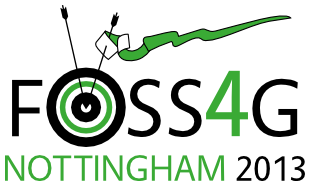Presentation
MOLUSCE – An Open Source Land Use Change Analyst
Matteo Gismondi (Asia Air Survey)
15:30 on Thursday 19th September (in Session 10, starting at 2:30 p.m., Auditorium)
Show in Timetable
Open source software platforms are progressively becoming widely used in the public and private sectors. In GIS (Geographical Information System), open source software packages such as Quantum GIS are actively being developed. More importantly, customization and further development is possible since developers create specific plugins with flexibility. Asia Air Survey Co., Ltd is currently developing MOLUSCE (Modules for Land Use Change Evaluation), a user-friendly plugin for a Quantum GIS. MOLUSE is designed to analyse, model and simulate land use changes. The plugin incorporates well-known algorithms, which can be used in land use/cover change analysis, urban analysis as well as forestry applications and projects. MOLUSCE is well suited to: analyse land use and forest cover changes between different type periods; model land use transition potential or areas at risk of deforestation; and simulate future land use and forest cover changes Currently, MOLUSCE is computing land use change analysis effectively. The plugin performs the same type of analysis as other proprietary software. However, sub-modules for computing land use transition potential modelling and simulation are currently undergoing testing and development. MOLUSCE was officially released to the public during the FOSS4G Japan meeting (3-5 November 2012) with a presentation during the main day event. Despite the relatively short time from the official release, the plug-in has already created a widespread interest of international recognized companies in AAS as one the first Japanese companies to embrace FOSS and engage in such a valuable project. The plugin incorporates the following sub-modules: Input Sub-module Land use maps from different epochs and biophysical and socio-economic driving factor data such as the road network, rivers, topography, population etc. are loaded in the Input Sub-model. Area Change Sub-module Computes quantitative land use changes between the initial and final land use/cover maps. Land use change transition matrices as well as land use change maps are computed. Sample data Sub-module Randomly selects user-specified sample points, which will be used for model calibration and validation Define Model Sub-module Four modelling methods are supported: Artificial Neural Networks (ANN), and Logistic Regression (LR), Multi-Criteria Evaluation (MCE) and Weights of Evidence (WoE). Simulation Sub-module Displays transition potential maps and calibration statistics. A simulated (projected) land use map is produced based on a Monte Carlo Cellular-automata model approach. Validation Sub-module This sub-module incorporates kappa statistics (standard kappa, kappa histogram and kappa location), which will be used to validate the accuracy of the simulated land use maps.
